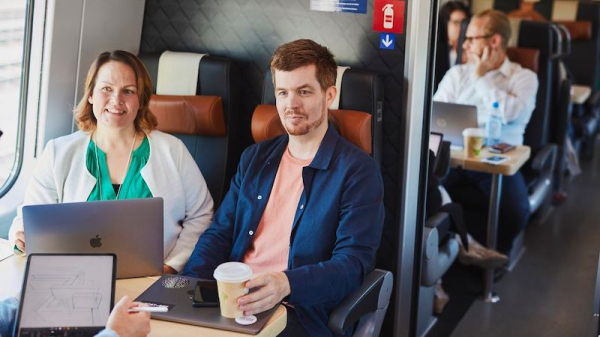
Photo: VR
- Next Article Helsinki finds widespread issues in imported food labeling and traceability
In a notable shift in travel trends, Finnish railway company VR has reported a robust 8% increase in long-distance travel this October compared to the previous year, with approximately 1.4 million journeys logged. This rise is attributed primarily to the upswing in weekend travel and a steady increase in commuting during weekdays.
Throughout the January to October period, 12.6 million long-distance journeys were recorded.
This positive development in passenger numbers contrasts with the challenges faced in the freight sector. October saw a 23% decrease in rail freight volumes, transporting 1.9 million tons, which reflects a year-to-date total of 19.1 million tons, marking a downturn from the previous year. The freight sector has been impacted by weakening industrial conditions and the cessation of traffic to the east.
Elisa Markula, CEO of VR, notes that the growth in long-distance travel can also be linked to passengers opting for tailored travel experiences. More travelers are choosing additional services, such as selecting seats in the Ekstra class or the restaurant car’s upper deck and ordering food to their seats either in advance or on a whim. Markula emphasizes VR’s commitment to environmental sustainability by highlighting the increased use of local produce and small producers in their dining selections, expanding vegan options, enhancing recycling efforts, and reducing plastic use.
On the freight side, VR Transpoint’s rail transportation volumes for October stood at 1.9 million tons. The slump in volume, which is a 23% decrease compared to last year, has been ascribed to the end of traffic to the east and the downturn in industrial sectors.
Furthermore, the report addresses long-distance travel punctuality, which stood at 82% in October. Delays were mainly due to rail-related issues (61%), followed by other reasons (21%) and VR’s own operational factors (18%), including equipment-related problems. Maintenance work and resulting temporary speed restrictions, particularly between Parkano and Seinäjoki, have been pinpointed as significant factors affecting punctuality.
Conversely, local train services presented a higher punctuality rate of 96.6%. Causes for delays were distributed among rail-related issues (42%), various other reasons (44%), and VR’s operational factors (15%).
The contrasting trends in passenger and freight sectors are reshaping VR’s focus as they work to accommodate the growing number of travelers while navigating the complexities of the current industrial landscape.
HT
- Next Article Helsinki finds widespread issues in imported food labeling and traceability
Source: www.helsinkitimes.fi
